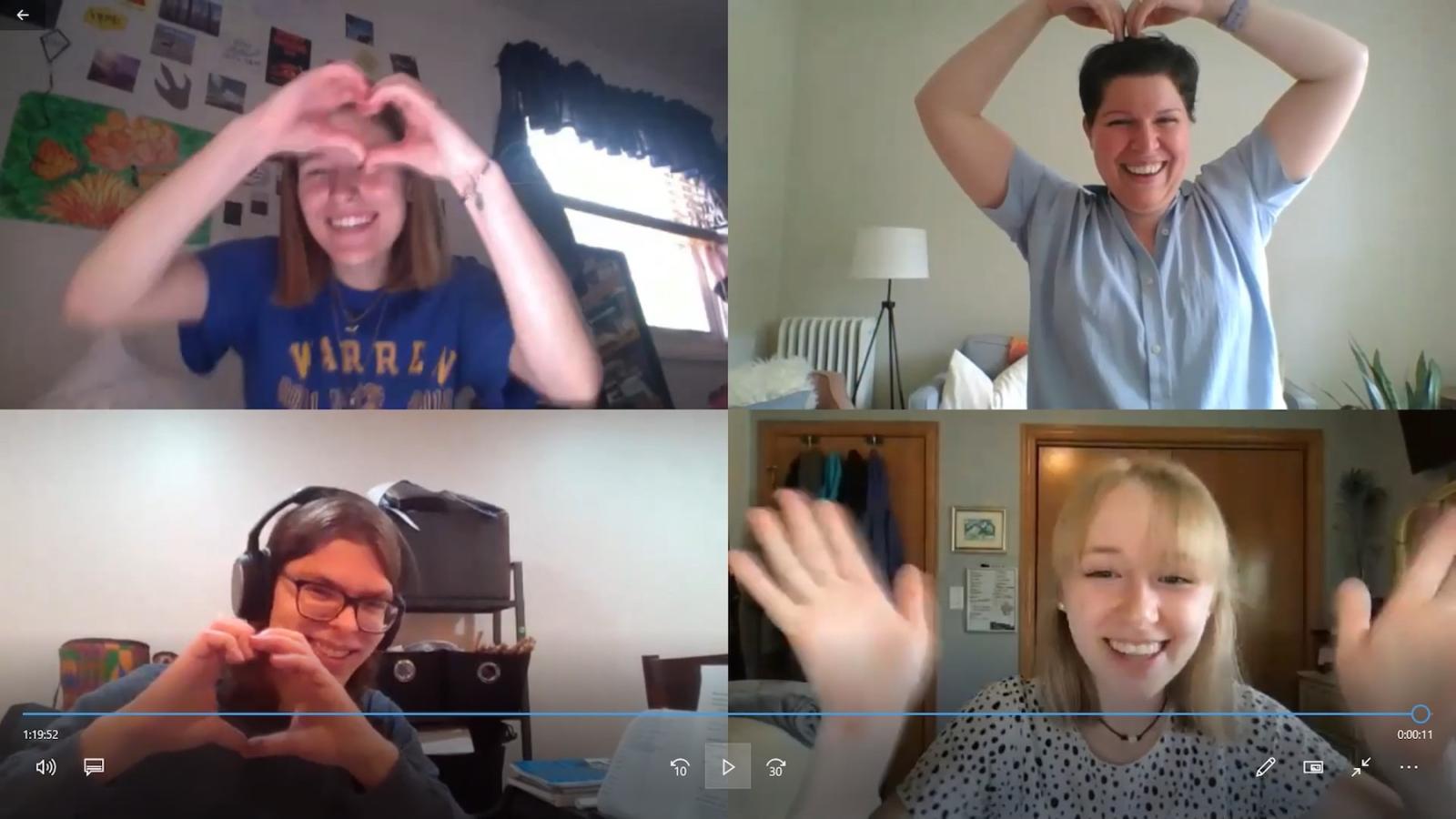It’s easy to recognize the power of music while in concert halls and music classrooms, but Betsy Kowal Jett and four Lawrence Conservatory of Music students looked to take it a step further this summer, tapping into music’s healing powers to help people on their mental health recovery journeys.
Kowal Jett, the Lawrence Conservatory’s community programs manager, recruited four music students to launch the outreach support group Creative Recovery: Music in Motion in partnership with the National Alliance on Mental Illness (NAMI) Fox Valley.
The four Conservatory students—seniors Jacob Dikelsky, Mindara Krueger-Olson, Lucian Baxter, and Holly Beemer—set out to use music to strengthen the community participants’ well-being. They partnered with Paula Verrett, the Iris Place program director for NAMI, to organize the sessions.
“NAMI, for a really long time, has been wanting to create music-based programming for their clients,” Kowal Jett said. “So, I saw that there was this need and desire for music in NAMI, and they recognized the power that music could have for their community.”
The goal was to explore various kinds of research on the healing impact that music can have, and then use appropriate methods and techniques to help participants bring out their own creative voices.
“Everyone who we’ve worked with in this creative recovery support group is in their mental illness recovery journey every single day,” Kowal Jett said. “I wanted to explore how music could become a part of their tool kit to help maximize their well-being.”
See more on the Lawrence Conservatory of Music here
The group met for one-hour Saturday sessions during three consecutive weeks in July. All of the participants were provided with a music-making kit and connected on Zoom, where the number of NAMI Fox Valley participants fluctuated between four and seven people.
Kowal Jett and her team would meet the Wednesday prior to go over what they had planned for Saturday, but Kowal Jett noted that she had already been training with her students for several weeks. They would plan and co-create the best way to introduce each week’s curriculum.
Each Saturday they shared different musical practices with the NAMI participants. The first Saturday they focused on body percussion, where they explored body movements through a call-and-response technique. The teaching artists and participants would create a rhythm and then the ensemble would echo that rhythm back. Then they explored the sounds that their bodies can make, and then finished their first session by co-creating a body percussion dance together.
The second Saturday focused on creating visual art in response to music. Each participant created graphic scores in response to music selections provided by the students. Baxter played an improvised piano piece; Beemer sang a Shakey Graves song accompanied with guitar; Krueger-Olson shared Through the Fence, a piece she co-created with her jazz combo.
On the final Saturday, the group created musical affirmations to embody the wisdom that guides each participant through their life challenges. The participants worked one-on-one with a teaching artist to transform their words into a song, and each songwriting pair shared their song for the group at the end of the session.
“The third session was so powerful because at the end of the session almost every person said that what they experienced filled them with hope,” Kowal Jett said.
The debut of the Creative Recovery program could not have gone smoother, Kowal Jett said. She attributes that to the hard work and dedication of the students and emphasizes that she could not have done this without support from her colleagues in the Conservatory, especially Brian Pertl, dean of the Conservatory, and Leila Ramagopal Pertl, professor of music education and the harp.
Verrett worked closely with Kowal Jett every step of the way. She said she was thrilled at how the program was delivered and received.
“This program made such a difference for me and the other participants,” Verrett said. “It was an opportunity to use music in a new way that supported the recovery of everyone in the group. It was an opportunity to be creative in ways that did not require formal music training. The group provided an opportunity to share with each other without fear of judgment and connect in a unique and different way.”
Not only did the Creative Recovery program leave a positive and hopefully lasting impression on the NAMI participants, but the four students who worked as teaching artists say they also benefited from the learning experience.
“These experiences have repeatedly shown me that we can—and should—broaden our musical focus to include many more styles of music to bring people from all walks of life together,” Dikelsky said.
Kowal Jett wants Creative Recovery: Music in Motion to become an annual summer program, where she can continue to help connect students with the community and provide safe and creative healing environments.
“Every single person is musical, every single person is creative, and to design a program where each person’s intrinsic, musical voice can flourish is so incredibly powerful to me,” Kowal Jett said. “It’s what I absolutely love about my job.”



